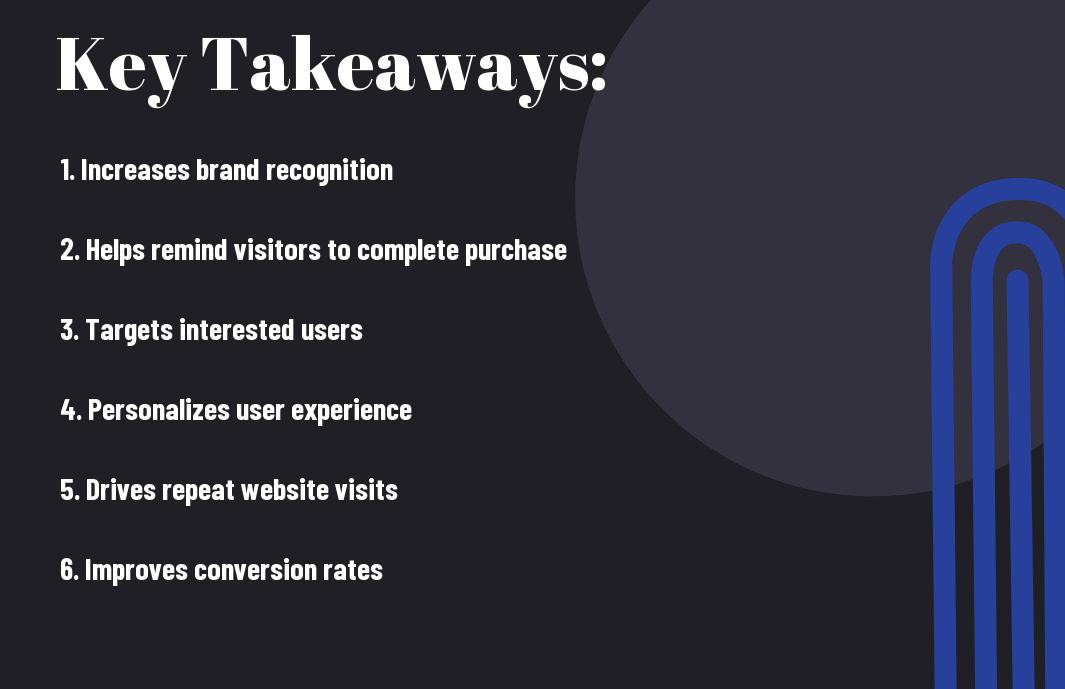Just imagine the impact of hooking a potential reader with a taste of your literary creation – offering a free sample or excerpt of your ebook can be a game-changer. By providing a sneak peek into your writing style and the essence of your book, you give readers a reason to engage and invest their time and money in your work. This marketing strategy can help increase visibility, build a following, and ultimately boost your ebook sales. So, why not share a piece of your masterpiece and entice readers to explore more?
Key Takeaways:
- Increases Exposure: Offering a free sample or excerpt of your ebook can help to introduce your content to a wider audience who may not have been willing to make a purchase upfront.
- Builds Trust: Providing a free sample allows readers to preview your writing style, content quality, and expertise, which can help build trust and credibility with potential customers.
- Generates Interest: A well-crafted free sample can pique the curiosity of readers, enticing them to purchase the full ebook to probe deeper into the content and ideas presented.

Building Trust with Potential Readers
Establishing Credibility
To build trust with potential readers, offering a free sample or excerpt of your ebook is a great way to establish credibility. By giving readers a preview of your writing style and the quality of content you provide, you show them that you are a credible and knowledgeable author. This initial taste of your work can help readers feel more confident in the value of your full ebook.
Showcasing Expertise
For showcasing expertise, providing a free sample of your ebook allows you to demonstrate your knowledge and authority on the subject matter. When readers see the depth of information and insight you offer in the sample, they are more likely to trust that the complete ebook will be worth their time and investment. This can help you attract a loyal readership who values your expertise and is more likely to recommend your ebook to others.
The more you can showcase your expertise in the free sample or excerpt, the more likely readers are to trust that you are a credible source of information. By offering valuable insights, tips, and solutions related to the topic of your ebook, you can pique the interest of readers and encourage them to explore deeper into your full ebook for more expert guidance.
For instance, if you’re writing a cookbook, offering a free sample recipe with detailed instructions and mouth-watering photos can instantly show readers that you are a skilled chef with valuable recipes to share. This demonstration of your expertise can entice readers to purchase the full cookbook to explore more of your culinary creations.
Generating Buzz and Hype
Assuming you want to create a buzz around your ebook and generate interest before its official release, offering a free sample or excerpt can be a powerful strategy. By providing a teaser of what’s to come, you can pique the curiosity of potential readers and build anticipation for the full book.
Creating Anticipation
One of the key benefits of offering a free sample is that it helps to create anticipation among your audience. By giving readers a taste of your writing style, storytelling, and content, you can leave them wanting more. This can be particularly effective if your sample ends on a cliffhanger or teases an intriguing plot twist, making readers eager to get their hands on the complete ebook.
Encouraging Social Sharing
Buzz. Sharing a free sample of your ebook on social media platforms can help expand your reach and attract new readers. Encourage your audience to share the excerpt with their friends and followers, creating a ripple effect that can increase visibility and generate more interest in your upcoming release. Additionally, incorporating social sharing buttons within the sample can make it easy for readers to spread the word with just a click, further amplifying the buzz around your ebook.
Furthermore, you can create a sense of exclusivity by offering the free sample for a limited time only, prompting readers to act quickly and share the opportunity with others before it expires. This sense of urgency can heighten the excitement and anticipation surrounding your ebook, contributing to the overall hype and buzz leading up to its launch.

Providing Value to Readers
Many authors find that offering a free sample or excerpt of their ebook is an excellent way to provide value to their readers. This strategy allows you to give a taste of what’s to come in the full book, enticing readers to want more.
Giving a Taste of What’s to Come
Come immerse yourself in a snippet of your ebook that leaves readers wanting more. By providing a sneak peek into the content, you can hook your audience and create anticipation for the rest of the book. This teaser not only engages readers but also allows them to get a feel for your writing style and the unique voice you bring to your work.
Offering a Glimpse into Your Writing Style
Offering readers a glimpse into your writing style through a free sample or excerpt is a powerful way to showcase your skills and captivate their interest. Your writing style is like your signature – it sets you apart from other authors and creates a connection with your audience. By sharing a piece of your work for free, you invite readers to experience your storytelling firsthand, encouraging them to explore more of your writing.
Value your readers by providing them with a taste of your ebook through a free sample or excerpt. This not only allows them to preview the content but also gives them an insight into your writing style, setting the stage for a deeper connection with your work.
Increasing Conversions and Sales
Overcoming Skepticism
For many potential buyers, skepticism is natural when considering purchasing an ebook. Offering a free sample or excerpt allows you to address this skepticism directly. By allowing readers to experience a portion of your content without commitment, you can showcase the quality and value of your work, helping to overcome any doubts they may have.
Encouraging Purchases
For those who have enjoyed your free sample or excerpt, the next step is to encourage them to make a purchase. By providing a taste of your ebook, you’ve already piqued their interest and demonstrated the value of what you have to offer. Including a call-to-action at the end of the sample, such as a limited-time discount or bonus offer for the full ebook, can motivate readers to take the leap and make a purchase.
Increasing conversions and sales is a crucial goal for any author or publisher looking to monetize their work. By strategically offering free samples or excerpts of your ebook, you can engage readers, earn their trust, and ultimately drive more conversions and sales of your full product.
Standing Out in a Crowded Market
Now, in a crowded market where countless authors are vying for readers’ attention, offering a free sample or excerpt of your ebook can be a game-changer. It allows you to stand out from the competition and showcase what makes your book unique.
Differentiating Yourself from Competitors
Crowded with various genres and a plethora of authors, it’s crucial to differentiate yourself from competitors. By providing a free sample, you give readers a taste of your writing style, plot, and characters. This sneak peek can intrigue potential readers and set your book apart from the masses, increasing the chances of them choosing to read more.
Highlighting Your Unique Voice
Your voice as an author is what sets you apart from others in the literary world. It’s the way you tell a story, your choice of words, and the emotions you convey. Offering a free sample of your ebook allows readers to experience your unique voice firsthand. This can create a connection between you and your audience, making readers more likely to invest in your full book to immerse themselves in your storytelling.
from
Encouraging Feedback and Reviews
Despite the apprehension you may feel about receiving feedback and reviews, offering a free sample or excerpt of your ebook can actually be a powerful way to encourage valuable insights from early readers.
Gathering Insights from Early Readers
Reviews from readers who have sampled your ebook can provide you with valuable insights into what aspects of your writing resonate with them and what areas may need improvement. Embrace this feedback as an opportunity for growth and refinement of your work. Their perspectives can offer fresh eyes that may reveal nuances or areas of improvement that you may have missed. By offering a free sample, you invite this constructive feedback and engage with readers in a meaningful way.
Building a Community Around Your Work
Feedback and reviews not only help you refine your writing but also play a crucial role in building a community around your work. When readers feel their opinions are valued and heard, they are more likely to become loyal supporters and ambassadors for your writing. This sense of community can create a buzz around your ebook, attracting more readers and fostering a sense of belonging among your audience. Embrace the feedback and reviews as a way to connect with your readers on a deeper level and cultivate a community that supports and celebrates your work.

Final Words
Now you have learned about the benefits of offering a free sample or excerpt of your ebook. By providing a taste of your content for free, you can attract more potential readers, increase your book’s visibility, and build anticipation for the full version. This strategy allows you to showcase your writing style, engage with your audience, and ultimately drive sales.
Q: What are the benefits of offering a free sample or excerpt of your ebook?
A: Offering a free sample or excerpt of your ebook can help attract potential readers who may be on the fence about purchasing your book. It provides them with a taste of your writing style and the content of the book, enticing them to buy the full version.
Q: How does offering a free sample or excerpt help with marketing and promotion?
A: By offering a free sample or excerpt, you can reach a wider audience through various channels such as social media, email campaigns, and book promotion websites. This can help increase visibility for your ebook and generate interest among readers.
Q: Are there any benefits for authors in offering free samples or excerpts of their ebooks?
A: Yes, offering free samples or excerpts can also help authors gather feedback from readers, which can be valuable for improving the book or for future writing projects. It can also help build a relationship with readers and establish trust, leading to potential loyal fans and increased book sales.














